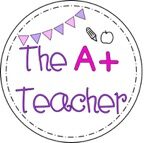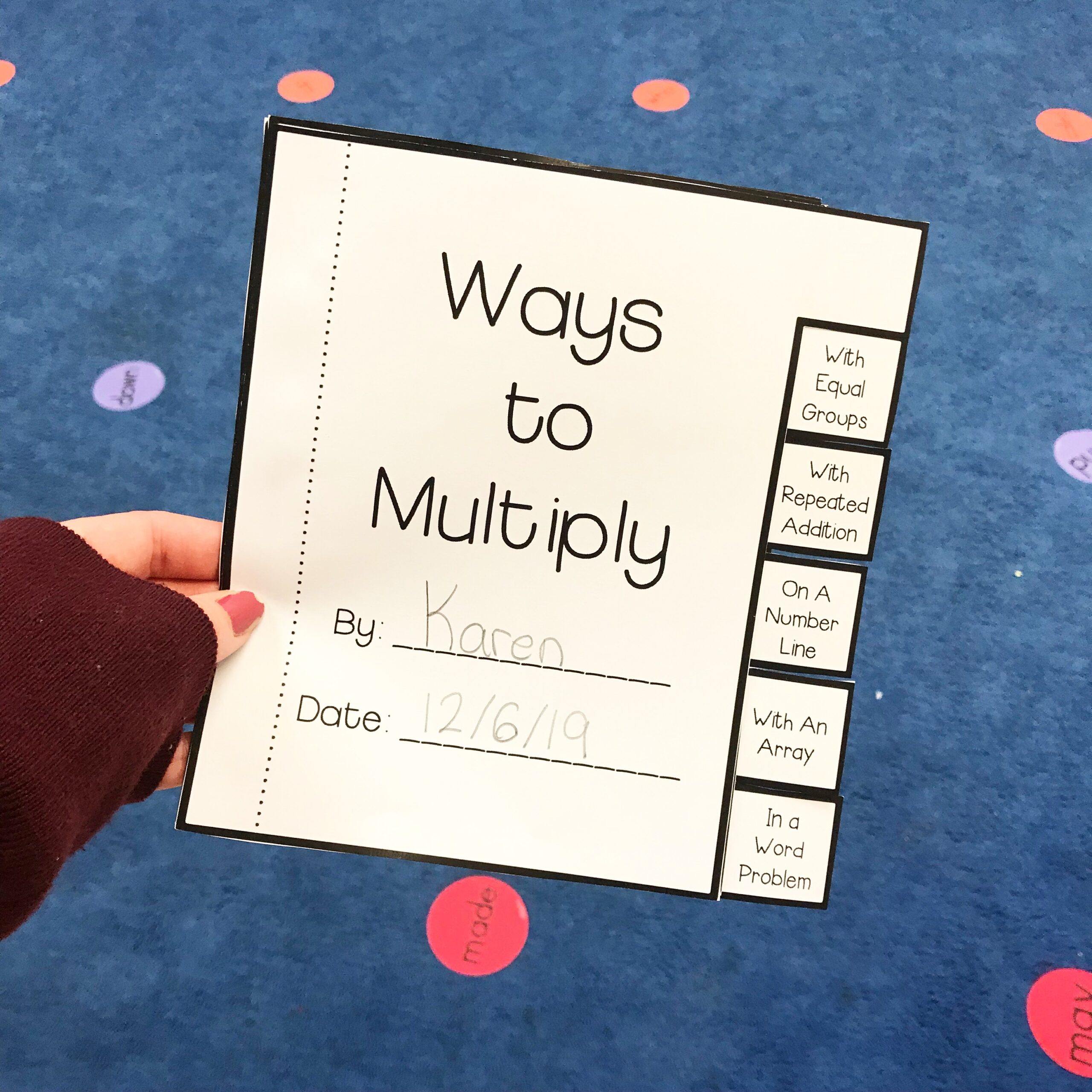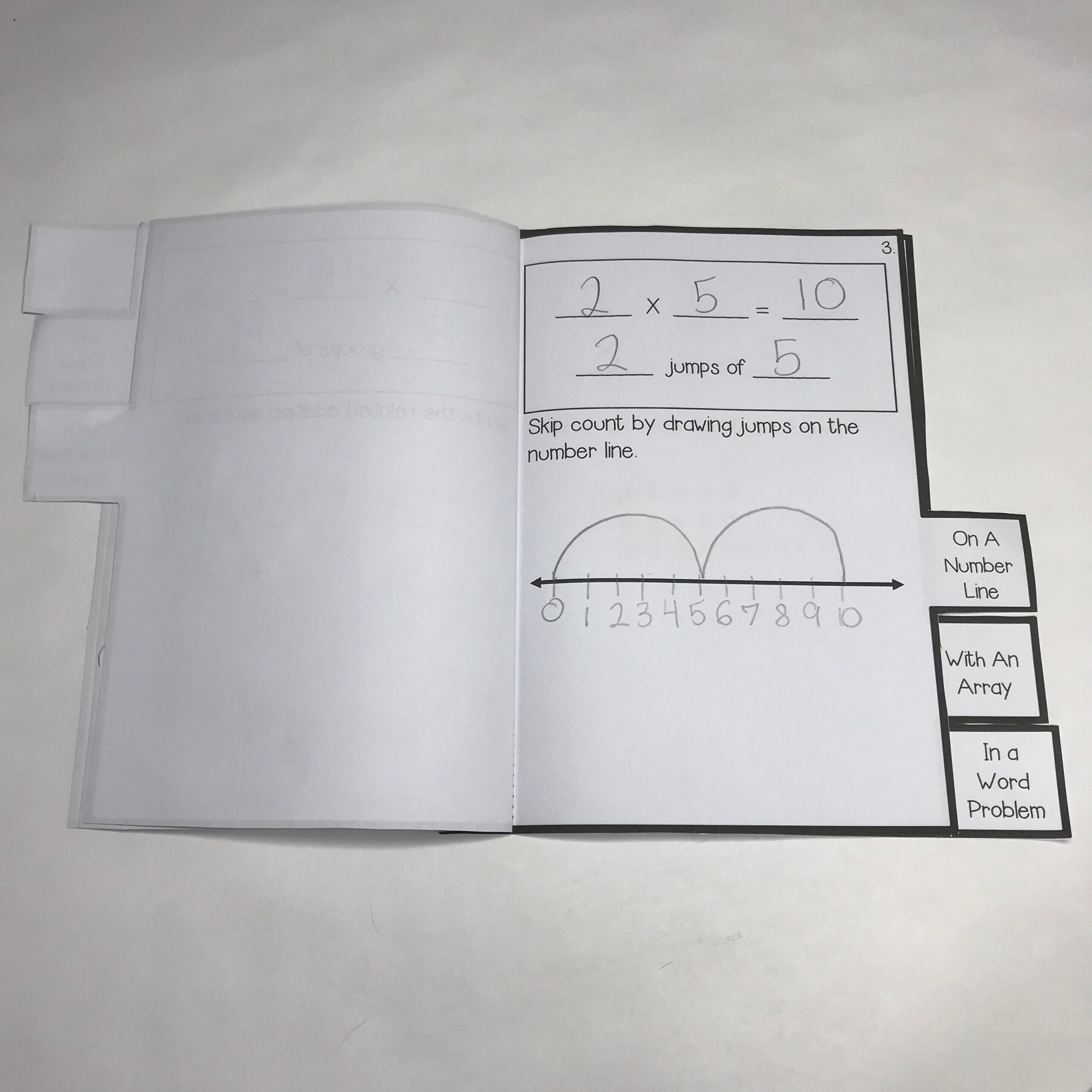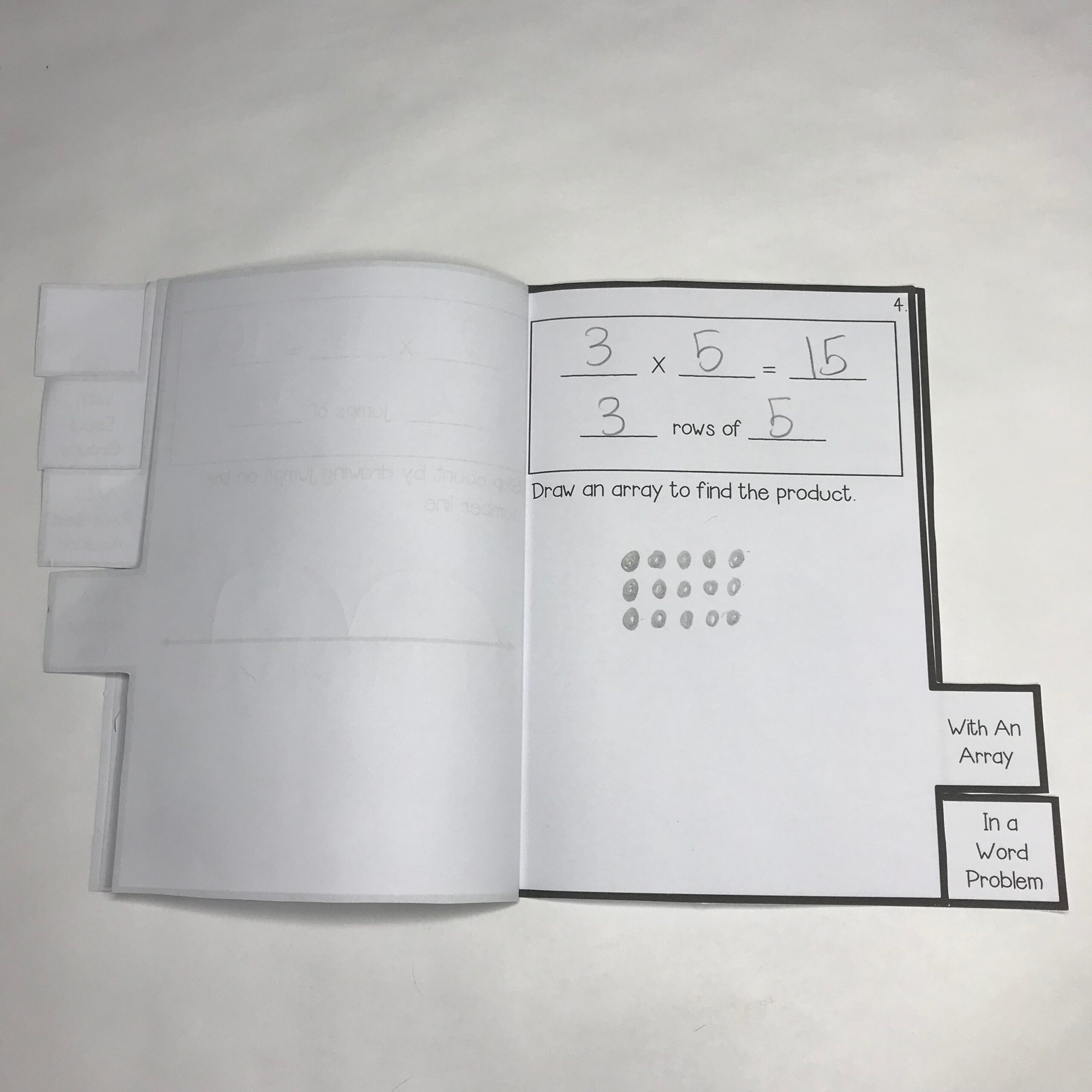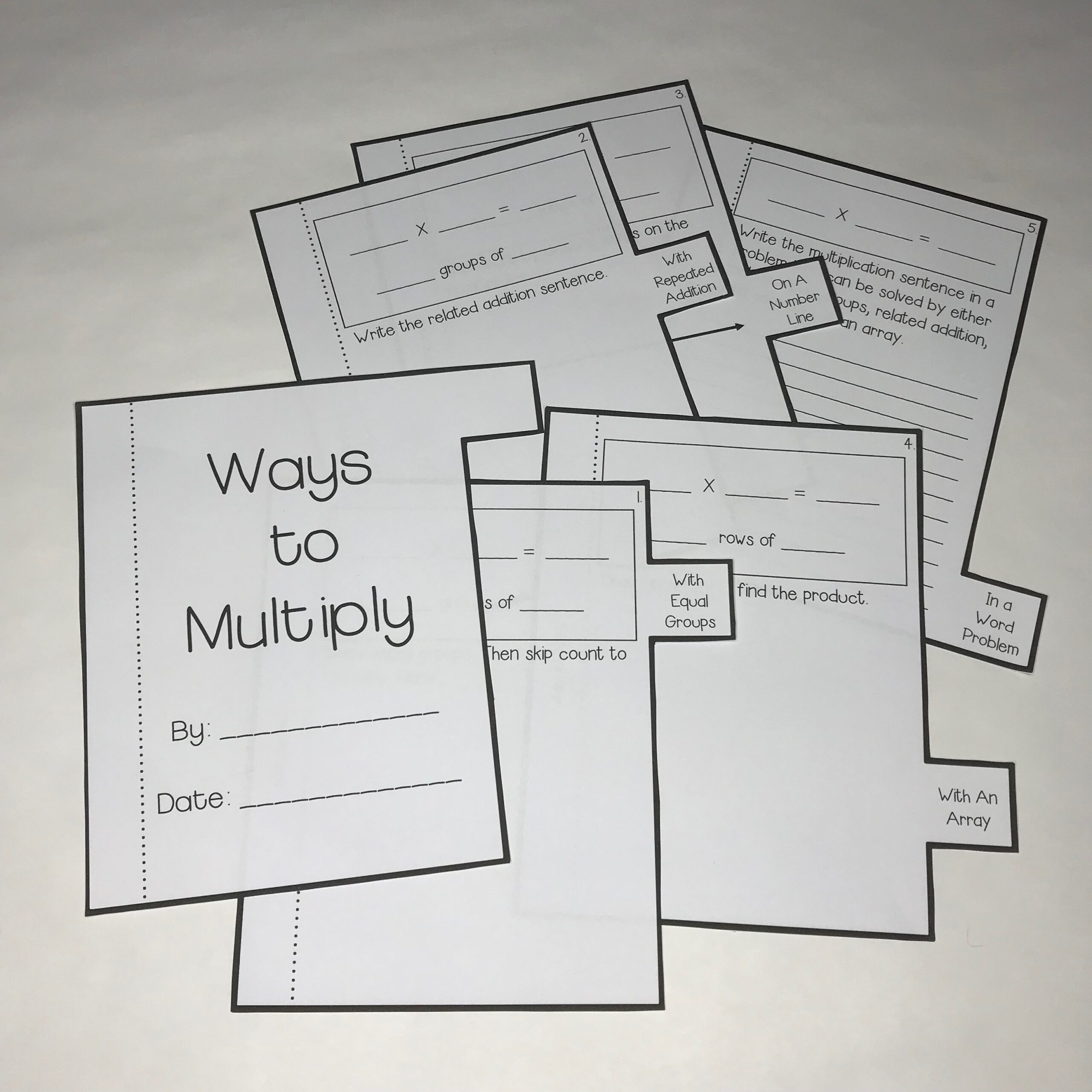Multiply with a Multiplication Interactive Notebook and Flipbook
I use a multiplication interactive notebook and flipbook to teach different ways to multiply. In my third grade classroom, we learn different ways to multiply by counting equal groups, with repeated addition, skip counting on a number line, making an array, and creating a word problem.
Multiply by Counting Equal Groups
First I teach my students how to multiply by counting equal groups. I model how to multiply by counting equal groups with a real-life model and example. I typically use an example with crayons or markers to help my students relate to making and counting equal groups to multiply. Then we practice multiplying by drawing and counting equal groups in our multiplication interactive notebook and flipbook.
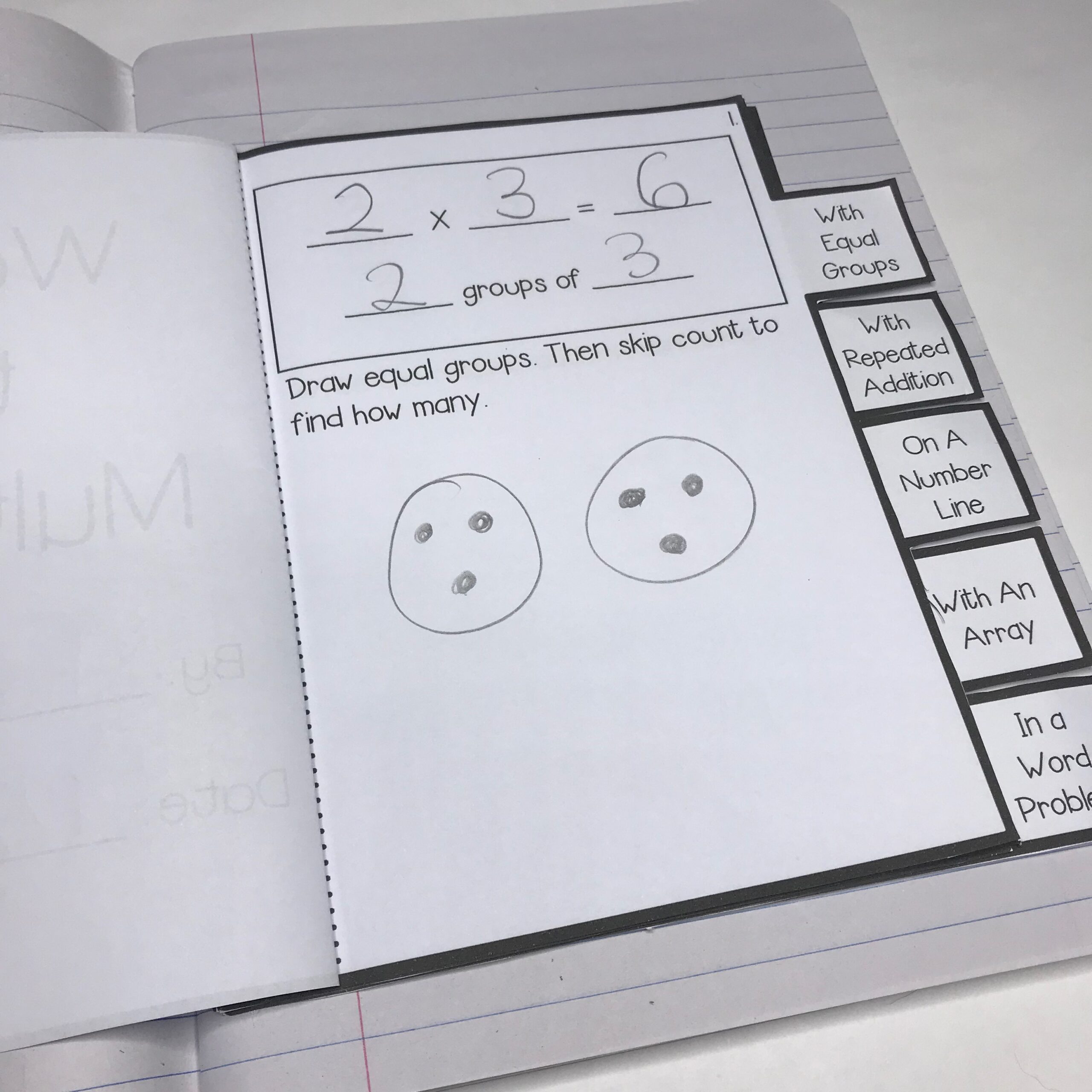
Multiply by Using Repeated Addition
Then I model how to multiply with repeated addition. I model finding the product by creating equal groups with real-life objects, typically crayons or markers. I then count how many crayons or markers are in each group and I model how to use repeated addition to find how many in all. Then we practice multiplying by using repeated addition for either the same or a new multiplication sentence in our multiplication interactive notebook and flipbook.
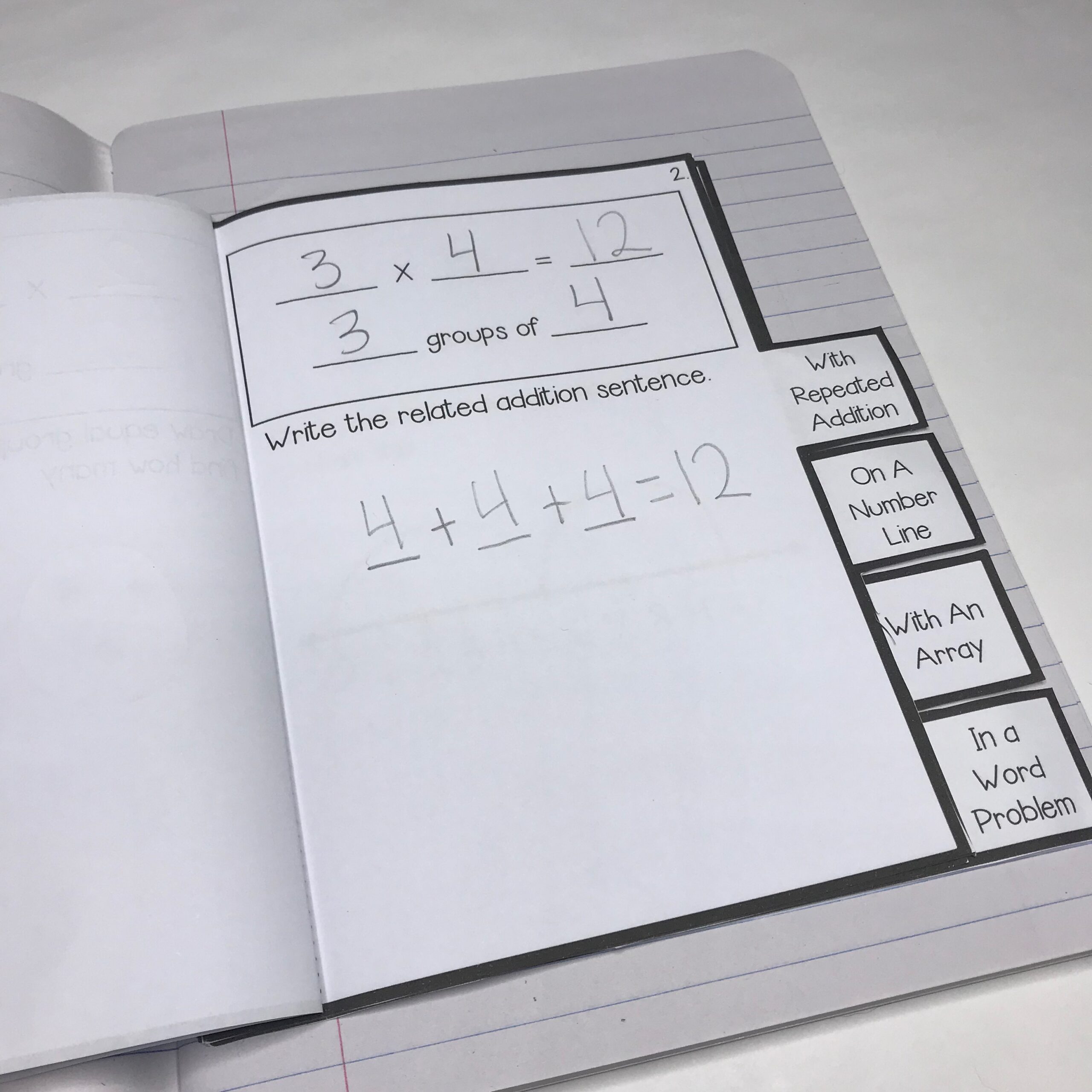
Multiply by Skip Counting on a Number Line
The third strategy I teach my students to learn how to multiply is to skip count on a number line. I first review the multiples and model how to skip count with different rhymes and chants. Then I model how to skip count on a number line by making equal jumps. We model multiplication by skip counting a number line in our multiplication interactive notebook and flipbook. Students choose to either represent the same multiplication sentence or a new multiplication sentence.
Multiply by Making an Array
The fourth strategy I teach my students how to multiply is by making an array. I explicitly explain to my students what a row and column are in an array. I also provide real-life examples that the students would be familiar with such as seeing rows and columns during an assembly or school concert. Then I model how to make an array to represent a multiplication sentence with tiles. Then as a whole class, we practice representing a multiplication sentence in an array in our multiplication interactive notebook and flipbook.
Multiply in a Word Problem
The fifth and final strategy I teach my students how to multiply is by writing a word problem. I believe it is important for students to be able to demonstrate an understanding of multiplication by being able to write, represent, and understand a word problem involving multiplication. I first model how to read and interpret a word problem involving multiplication. Then I represent a real-life word problem by creating equal groups, usually with crayons or markers. Then I model how to write a word problem to represent the scenario I used to model the multiplication sentence. Then as a class, we practice writing a word problem involving multiplication of equal groups, repeated addition, or with an array. Students write a multiplication word problem in their multiplication interactive notebook and flipbook.
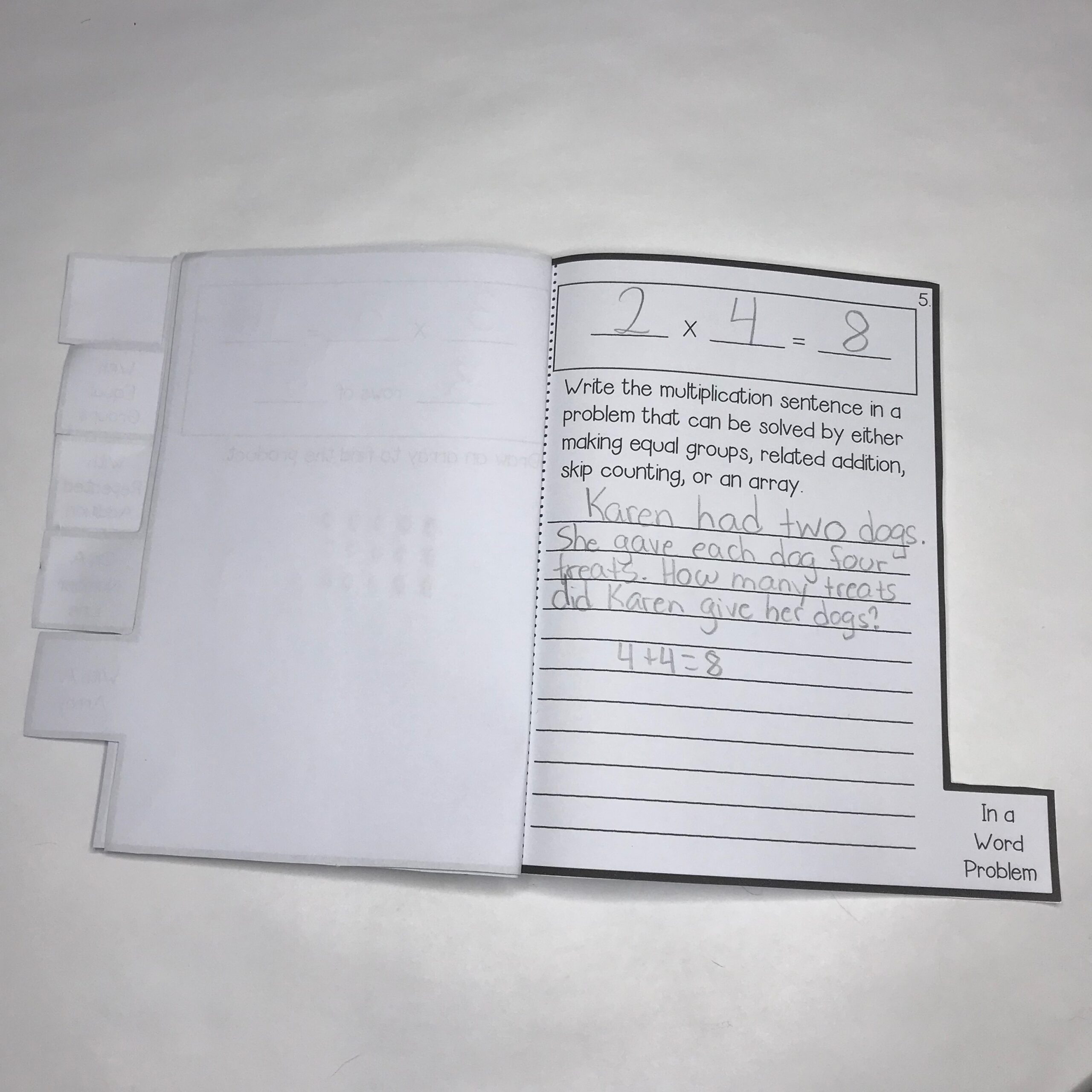
That’s how I use an interactive notebook and flipbook to teach different ways to multiply.
Interested in using the multiplication interactive notebook and flipbook in your classroom? Click here to get the Multiplication Interactive Notebook and Flipbook.
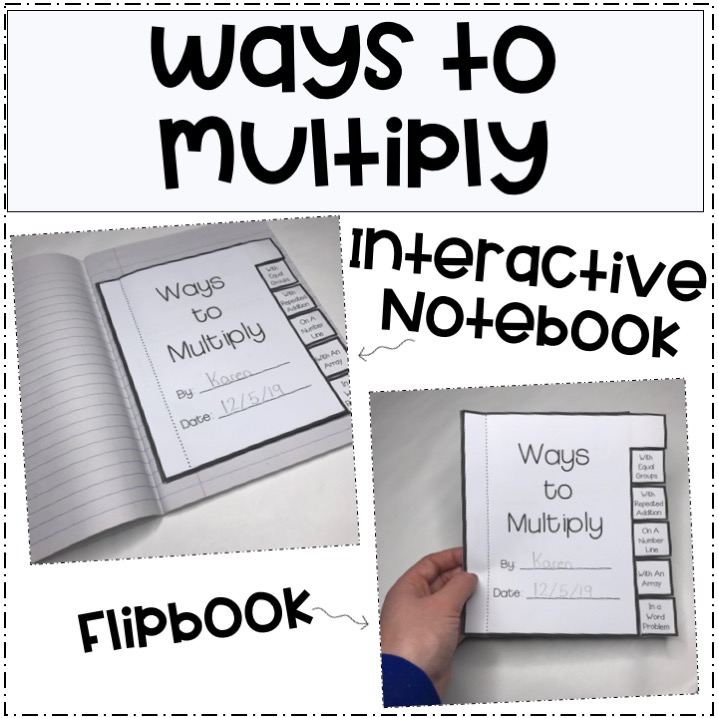
Thank you for reading!
Interested in other ways to make math fun and engaging? Check out my blog post about reviewing prime and composite numbers. Check out my online store to view additional resources that help make math fun and engaging.
